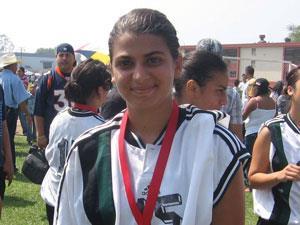Funding from US research agencies should be linked to a PI’s safety record, says the sister of UCLA lab accident victim

The American Chemical Society (ACS) and its members are being pressed to speak out against poor safety conditions in US academic labs, and to lobby the National Institutes of Health (NIH) to consider researchers’ safety records when allocating funding. The call comes from the sister of the late Sheri Sangji, a 23-year-old research assistant at the University of California, Los Angeles (UCLA) who died in January 2009 from injuries sustained during a dangerous lab experiment.
Sangji was a new hire who suffered third-degree burns to almost half of her body when working unsupervised with t-butyl lithium in the organic chemistry lab of Patrick Harran. She had been using a 60ml plastic syringe with a 1.5 inch needle on the end that was too short to reach to the bottom of the bottle containing the pyrophoric solution, and there was an open flask of hexanes nearby. The material caught fire when the plunger somehow came out of the barrel, and Sangji was not wearing a lab coat. Her family argued that she had received improper training, equipment, and supervision, and that she was carrying out Harran’s irresponsible orders.
‘Notably absent from this diverse group asking for justice and change are the academic scientists,’ the victim’s sister, medical doctor Naveen Sangji, told a session at the 250th ACS National Meeting & Exposition at Boston, US on 17 August.
Academics silent
‘We still await an outcry from university scientists at the loss of the life of a young scientist,’ she added. ‘Where are the letters from the award-winning researchers and Nobel laureates condemning the university and the principal investigator (PI) for the deliberate disregard of safety?’
Naveen went on to reveal new details about the case, relaying Sheri’s remarks in the hospital that Harran had asked her to perform large-scale experiments without appropriate equipment, which was packed away in boxes. ‘Sheri stated quite clearly at the burn centre that Patrick Harran had explicitly instructed her to carry out three transfers of 50ml of t-butyl lithium using a 60ml syringe,’ Naveen said. As for her sister’s failure to wear a lab coat during the fatal experiment, Naveen said she was likely never issued such equipment.
In 2009, Naveen requested that the ACS Board make a public statement condemning Harran’s behaviour, which she claims includes destruction of evidence and refusal to make full disclosure. The organisation’s chief executive at the time, Madeline Jacobs, declined to publicly comment on the matter. Naveen urged ACS’ current chief executive, Thomas Connelly, to make such a statement, and go even further.
Specifically, she wants Connelly to write an open letter to the head of the NIH, Francis Collins, advocating for that a PI’s safety record be considered in the agency’s peer review process.
‘Tremendous power’
‘The ACS has tremendous power, and with that there is responsibility to protect the young scientist you hope to nurture,’ Naveen stated. ‘What the NIH adopts, other funding agencies will follow.’ She said that PIs are busy, and funding is chief among their priorities. ‘Tie funding and safety together, and change will happen overnight – future generations of scientists will be better protected than Sheri was,’ Naveen asserted.
In the wake of Sangji’s death, California’s Division of Occupational Safety and Health, known as Cal/OSHA, fined UCLA more than $30,000 (£19,000), and a later inspection added another fine of nearly $100,000. The reasons cited included lack of training and lack of personal protective equipment, as well as failure to correct previously identified unsafe conditions inside the lab. Cal/OSHA also recommended that the Los Angeles District Attorney file manslaughter charges against Harran. However, the DA ended up charging him with felony violations of the California state labour code.
In the end, UCLA spent $4.5 million to defend Harran against criminal charges, covering all his legal fees. The university settled in July 2012, accepting responsibility, establishing a $500,000 scholarship in Sheri’s name, and agreeing to follow a specific lab safety programme.
Harran also eventually settled out of court as well, in June 2014. He still has the same job and continues to receive NIH funding, which Naveen says totals almost $1 million per year. His colleague, Craig Merlic, a UCLA chemistry professor and executive director of its Center for Laboratory Safety, confirms that Haran still oversees graduate as well as postdoctoral students, and continues to teach classes.
However, Merlic notes that Harran did enter into a five-year deferred prosecution agreement with the DA, which means that he has to, among other things, keep his nose clean for that period of time, or he could face charges again. Merlic said UCLA now require flame resistant lab coats in all of its research labs.












No comments yet